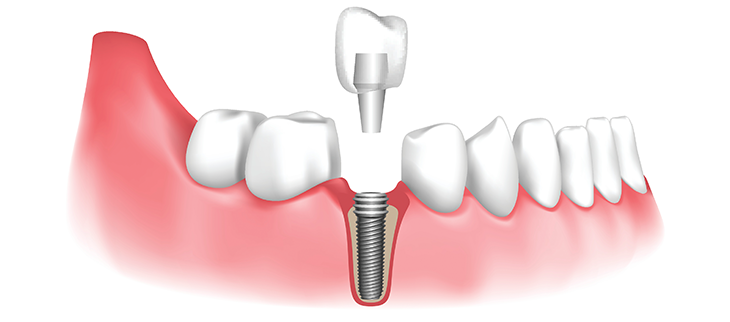Experience the Transformation with Dental Implants
Understanding Dental Implants
 In essence, dental implants are minute titanium or zirconium oxide screws that serve as artificial tooth roots. The implant body, which is the screw itself, is inserted into the jaw, replicating the root structure of a natural tooth. An abutment and a crown, which are commonly integrated into one unit, are then affixed onto the implant body, either by screwing or by screwing and cementing. Dental implants are the foremost choice of treatment for replacing a single tooth, multiple teeth (via an implant-supported bridge), or even for enhancing the secure fit of a denture (implant-supported dentures).
In essence, dental implants are minute titanium or zirconium oxide screws that serve as artificial tooth roots. The implant body, which is the screw itself, is inserted into the jaw, replicating the root structure of a natural tooth. An abutment and a crown, which are commonly integrated into one unit, are then affixed onto the implant body, either by screwing or by screwing and cementing. Dental implants are the foremost choice of treatment for replacing a single tooth, multiple teeth (via an implant-supported bridge), or even for enhancing the secure fit of a denture (implant-supported dentures).
Before the procedure, the dentist meticulously screens the patient to ensure there are no contraindications. In some cases, the practitioner may require a CBCT scan of the jaw to confirm the presence of adequate bone for the implant. Depending on the patient's unique situation or the dentist's level of expertise, a surgical stent (guide) may be employed to ensure accurate and predictable outcomes.
Once the implant is inserted, the dentist will either place a cover screw and stitch the soft tissue over the implant or employ an abutment, suturing the tissue around the part protruding from the gum. Post this, the implant needs around 3-4 months of healing/integration before a crown can be attached.
When the crown is designed and affixed onto the implant either by screwing or by screwing and cementing, the treatment is deemed complete. The implant crown is permanent and not designed for easy removal. Caring for your implant involves no special routine, just regular brushing and flossing to keep plaque at bay.

